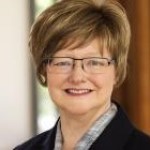Title:
Orthogonally different mineral reactions, same outcome of permeability reduction: How can this be? Abstract:
Sustainable energy technologies that involve subsurface gas storage require reliable containment of buoyant fluids. An example is geologic carbon sequestration in which large volumes of CO2 are injected deep underground into porous formations with overlying caprocks. Storage security could be jeopardized if fractures exist, so strategies are needed to seal permeable flow paths. In our work, two orthogonally different mineral reaction scenarios were explored. In one case minerals precipitated and in the other case minerals dissolved, but both cases had the same outcome of reduced fracture permeability. How can this be? In the first case, vein minerals from a mudrock sample of the Wolfcamp formation provided insights about syntaxial mineral growth in a fracture. Dolomite and other carbonate minerals had precipitated in the fracture, closing it off to fluid flow. In the second case, a carbonate-rich shale was reacted leading to calcite dissolution along fracture surfaces. Subsequent compression from normal stress collapsed the altered layer, sealing the fracture and reducing permeability. These studies show that multiple mineral reaction mechanisms can achieve fracture sealing and permeability reduction, a favorable outcome in subsurface applications where the goal is to reduce leakage risks. Bio:
Catherine Peters is the Magee Professor of Geosciences and Geological Engineering, in the Department of Civil & Environmental Engineering at Princeton University. Dr. Peters is an expert in environmental chemistry and geochemistry, known for her leadership in sustainable energy technologies. She is a Fellow of the Association of Environmental Engineering and Science Professors (AEESP), and served as president in 2002. She is Editor-in-Chief of Environmental Engineering Science. She teaches courses in environmental chemistry, energy and the environment, and sustainable design. |

